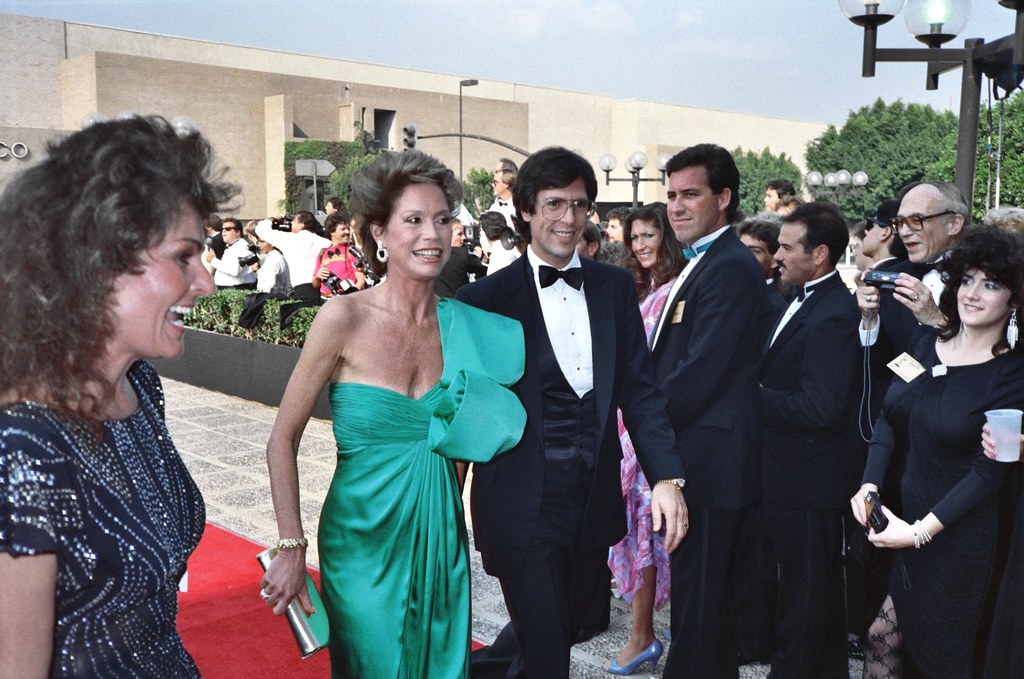
John Allen Amos Jr., the esteemed American actor whose commanding presence and profound performances defined an era of television, died on August 21, 2024, in Inglewood, California, at the age of 84. His passing, not publicly announced until October 1, 2024, marked the end of a career spanning over five decades, leaving an indelible mark on the landscape of American entertainment and cultural representation. His legacy extends beyond the screen, embodying a steadfast commitment to authenticity in storytelling.
Amos was widely celebrated for his groundbreaking roles, most notably as James Evans Sr., the resilient patriarch on the CBS sitcom “Good Times,” and as the adult Kunta Kinte in the monumental 1977 miniseries “Roots.” These characters, among many others, showcased his remarkable range and his dedication to portraying complex, dignified African-American figures at a time when such representation was rare. He frequently leveraged his platform to advocate for more nuanced and truthful depictions of the Black experience, a commitment that sometimes placed him at odds with the creative establishment.
This article delves into the early life and foundational chapters of John Amos’s career, exploring the experiences that shaped his unique artistic voice and the pivotal roles that established him as a television icon. We examine his journey from the athletic field to the dramatic stage, tracing the trajectory of an artist who consistently sought to infuse his work with integrity and a deep understanding of the human condition, solidifying his place as a beloved “TV father” and an influential cultural figure.

1. **The Early Years: From Football Fields to Social Work** Born on December 27, 1939, in Newark, New Jersey, John Allen Amos Jr. began his life far from the television studios that would later define his career. He was the son of John A. Amos Sr., an auto mechanic, and Annabelle Amos, growing up in East Orange, New Jersey, where he graduated from East Orange High School in 1958. His early years were marked by a keen interest in athletics and academics, passions he pursued through his collegiate studies.
Amos attended Long Beach City College before graduating from Colorado State University with a degree in sociology. During his time at both institutions, he was a formidable presence on their respective football teams, showcasing an athleticism that briefly led him towards a professional sports career. In 1964, he signed a free agent contract with the Denver Broncos of the American Football League, but his football aspirations were curtailed due to a pulled hamstring, leading to his release on the second day of training camp.
Despite this setback, Amos continued to pursue football in various minor leagues, playing for teams such as the Canton Bulldogs and Joliet Chargers in 1964, the Norfolk Neptunes and Wheeling Ironmen in 1965, and the Jersey City Jets and Waterbury Orbits in 1966. In 1967, he signed another free agent contract with the AFL’s Kansas City Chiefs. It was during this period that Coach Hank Stram famously told him, “You’re not a football player, you’re a man who is trying to play football,” a pivotal moment that may have subtly nudged him towards a different path.
Before fully dedicating himself to acting, Amos channeled his sociology degree into a career as a social worker in New York City. He worked at the Vera Institute of Justice, where he was involved with defendants at the Brooklyn House of Detention. This experience provided him with a profound understanding of societal structures and human struggles, which would undoubtedly inform the depth and authenticity he brought to his later acting roles, particularly those depicting working-class African-American families.

2. **The Breakthrough: Weatherman Gordy Howard on “The Mary Tyler Moore Show”** John Amos’s initial foray into the entertainment industry saw him gaining recognition not through a dramatic role, but through a lighter, more commercial avenue. He first became known in 1971 when he appeared alongside Anson Williams in a commercial for McDonald’s, a ubiquitous presence that brought his face to national attention. That same year, he secured a small but memorable part in the cult film “Vanishing Point,” playing a radio engineer opposite Cleavon Little, hinting at his burgeoning on-screen versatility.
However, it was his casting in a prominent television series that truly marked his breakthrough. From 1970 until 1973, Amos took on the role of Gordy Howard, the affable weatherman on the critically acclaimed CBS sitcom “The Mary Tyler Moore Show.” This role marked his first major television presence, where he served as a calm, professional counterpoint to the often bombastic antics of Ted Baxter, the station’s lead anchorman. His portrayal of Gordy Howard demonstrated an early ability to command attention even in a supporting capacity, showcasing his nuanced comedic timing.
As the show’s only recurring Black character, Gordy Howard occupied a unique space in the ensemble, bringing a quiet dignity and professionalism to the chaotic newsroom of WJM-TV. His character was not defined by stereotypes, but rather by competence and a dry wit, offering an important early example of positive and multifaceted African-American representation on mainstream television. This role laid crucial groundwork for his subsequent iconic performances, allowing audiences to become familiar with his commanding yet genial screen persona.
The significance of this role was further underscored in later years. Following the death of Betty White in 2021, John Amos and Joyce Bulifant (who played Marie Slaughter) became the last surviving credited cast members of “The Mary Tyler Moore Show,” excluding child actors. This fact highlights the enduring impact and longevity of the series, and by extension, Amos’s integral contribution to its legacy, marking him as a part of one of television’s most beloved and influential sitcoms.

3. **Becoming James Evans Sr.: The Enduring Legacy of “Good Times”** For many, John Amos became a household name and an enduring symbol of fatherhood through his portrayal of James Evans Sr. on the CBS television series “Good Times.” The sitcom, which premiered in 1974, quickly became a cultural touchstone, depicting the struggles and triumphs of an African-American family living in a public housing project in Chicago. Amos’s character, James Evans Sr., was the hardworking, devoted husband of Florida Evans, played by Esther Rolle, and the patriarch of three children.
Amos had actually originated the role of James Evans Sr. in three prior appearances on the sitcom “Maude,” a spin-off of “All in the Family.” When “Good Times” was developed as a further spin-off focusing on the Evans family, Amos continued in the role, bringing a profound sense of gravity and love to his character. His portrayal of James Evans Sr. was central to the show’s premise, illustrating a man who often worked two manual labor jobs to support his family, embodying resilience and dignity in the face of economic hardship.
Interestingly, Amos was 34 when “Good Times” began production in January 1974, a casting detail that presented an intriguing dynamic within the on-screen family. He was only eight years older than Jimmie Walker, who played his oldest son, J.J., and a striking 19 years younger than his screen wife, Esther Rolle. Despite the age disparities, Amos brought an undeniable gravitas and paternal authority to James Evans Sr., making the character a credible and deeply beloved figure to millions of viewers who saw him as their “TV father.”
Both Amos and Esther Rolle shared a deep commitment to presenting a positive and authentic image of an African-American family grappling with the challenges of poverty. Amos articulated this aspiration in a 2021 interview with Time magazine, stating, “That show was the closest depiction in reality to life as an African American family living in those circumstances as it could be.” This shared vision for genuine representation would, however, lead to significant creative tensions, ultimately shaping the trajectory of the series and Amos’s involvement.

4. **Navigating Creative Differences: John Amos’s Stance on Authenticity in “Good Times”** While “Good Times” resonated deeply with audiences for its portrayal of a resilient Black family, behind the scenes, significant creative disagreements arose, particularly concerning the direction of the show’s comedic elements. John Amos, like his co-star Esther Rolle, expressed growing dissatisfaction with what he perceived as a dilution of the show’s original premise by a “lower level of comedy,” which he felt undermined the authenticity of the African-American experience it aimed to represent.
Amos openly clashed with the show’s writers, articulating his concerns about the scripts’ lack of realism. His criticism was notably directed at what he viewed as an overemphasis on Jimmie Walker’s character, J.J., and a corresponding lesser regard for the development of the other two Evans children. More fundamentally, he criticized J.J.’s “stereotypical buffoonish personality,” arguing that such portrayals did not reflect the reality of the community the show purported to represent.
His commitment to genuine representation was unwavering. In a 2017 interview, Amos recounted telling the writers, “That just doesn’t happen in the community. We don’t think that way. We don’t act that way. We don’t let our children do that.” He believed he was in a unique position to guide the creative team towards greater fidelity, stating, “I’ll be the expert on that, if you don’t mind,” signaling his readiness to challenge narratives he found inauthentic.
These confrontations, born from a desire for respect and accuracy in depicting Black lives, became increasingly “confrontational and heated.” Amos’s outspoken nature, while celebrated by many for its integrity, ultimately led to an untenable situation with the production team. His advocacy for more thoughtful storytelling underscored his role not just as an actor, but as a cultural commentator committed to elevating the discourse around race and representation in mainstream media.

5. **The Death of James Evans Sr. and Its Aftermath** The escalating creative tensions between John Amos and the “Good Times” writing staff reached a critical point, culminating in his dismissal from the series by executive producer Norman Lear at the end of season three in 1976. This decision sent shockwaves through the television landscape, as audiences were deeply invested in his character, James Evans Sr., as the moral compass and stabilizing force of the Evans family. The departure of such a central figure necessitated a dramatic storyline explanation.
The writers chose to kill off James Evans Sr. in a car accident, a plot development that became one of television’s most memorable and emotionally charged moments. The scene depicting his screen wife, Florida Evans (Esther Rolle), screaming, “Damn! Damn! Damn!” in anguish upon learning of his death, remains an iconic portrayal of grief and despair. This pivotal episode highlighted the immense emotional impact Amos’s character had generated and underscored the raw reality of loss that resonated deeply with viewers.
His absence profoundly altered the dynamics of “Good Times,” shifting the narrative focus further towards Jimmie Walker’s character, J.J., a direction that both Amos and Rolle had critically opposed. Jimmie Walker himself, in his 2012 memoir “Dyn-O-Mite! Good Times, Bad Times, Our Times,” expressed regret over the situation, writing, “If the decision had been up to me, I would have preferred that John stay and the show remain more of an ensemble.” This sentiment reflected the broader recognition that the show had lost a vital element of its original vision and dramatic weight.
Despite the acrimonious circumstances of his departure, time allowed for reconciliation. Amos later stated, “Ultimately my being killed off the show was the best solution for everybody concerned, myself included,” indicating a pragmatic acceptance of the outcome. A testament to the enduring bond and mutual respect, Amos and Norman Lear publicly reconciled, sharing a heartfelt hug at a “Good Times” live TV reunion special in 2019, signifying the healing of past creative wounds and celebrating the shared legacy of a landmark series.
Read more about: Erika Kirk Breaks Silence: A Widow’s Vow to Uphold Charlie Kirk’s Legacy and Mission Amidst National Mourning

6. **The Transformative Power of “Roots”: Portraying Adult Kunta Kinte** Within a year of his controversial exit from “Good Times,” John Amos secured a role that would not only define a new chapter in his career but also become one of the most significant dramatic performances in television history. In 1977, he starred in the ABC-TV Miniseries “Roots” as the adult Kunta Kinte, the central figure in Alex Haley’s groundbreaking novel. This miniseries captivated a nation, telling the epic story of an African-American family across generations, from slavery to freedom, and its impact was immediate and profound.
Amos’s portrayal of Kunta Kinte, particularly as the character endured the brutal realities of slavery, showcased a dramatic depth and emotional power that transcended his previous comedic roles. The miniseries itself was a critical and ratings blockbuster, drawing unprecedented viewership and igniting national conversations about race, history, and identity. For his compelling performance, Amos earned an Emmy nomination, solidifying his reputation as a formidable dramatic actor capable of tackling complex and historically significant narratives.
Reflecting on the role, Amos recognized its immense personal and professional significance. He told Time magazine, “I knew that it was a life-changing role for me, as an actor and just from a humanistic standpoint.” He further described it as “the culmination of all of the misconceptions and stereotypical roles that I had lived and seen being offered to me. It was like a reward for having suffered those indignities,” suggesting that the role offered a sense of vindication and purpose after his struggles for authenticity on “Good Times.”
His involvement in “Roots” was a source of immense pride, as he expressed gratitude for being part of a project “that changed people’s thinking about slavery to some degree, and changed people’s attitudes about their own lineage.” In an interview with the Archive of American Television in 2015, Amos recalled feeling as though he “almost fainted” when he heard he was being considered for the “once-in-a-lifetime” role, comparing it to “hit[ting] the lottery.” His performance helped to humanize the experience of slavery for millions, making history profoundly personal and unforgettable.
7. **Expansive Filmography: Diverse Roles on the Big Screen**Beyond his television triumphs, John Amos cultivated a robust career in film, showcasing a remarkable versatility that extended across various genres and character types. His early film work included a small, uncredited appearance in the cult film “Vanishing Point” (1971) as a radio engineer. He soon moved into more prominent roles, notably as Coach Sam Archer in Disney’s “The World’s Greatest Athlete” (1973), his first starring film role, and as Kansas City Mack in the 1975 comedy “Let’s Do It Again,” co-starring with Bill Cosby and Sidney Poitier. These roles allowed him to demonstrate a lighter, more athletic side of his acting prowess.
Amos continued to build an impressive filmography through the 1980s and 1990s, often taking on roles that contrasted sharply with his television persona. He portrayed Seth in the fantasy adventure “The Beastmaster” (1982) and Esteban in “Dance of the Dwarfs” (1983), venturing into genre filmmaking. In 1985, he appeared in “American Flyers,” further demonstrating his range. His dramatic capabilities were highlighted in “Lock Up” (1989), where he played Captain Meissner, and in “Die Hard 2” (1990), where he took on the significant role of Major Grant, a commanding presence opposite Bruce Willis.
A particularly memorable and beloved film role for Amos was Cleo McDowell, the owner of McDowell’s restaurant and father to Lisa McDowell, in the highly successful Eddie Murphy comedy “Coming to America” (1988). He reprised this role in the 2021 sequel, “Coming 2 America,” delighting a new generation of fans. Other notable film credits include “Two Evil Eyes” (1989), “Ricochet” (1991), “For Better or Worse” (1995), “The Players Club” (1998) as Officer Freeman, and “Uncut Gems” (2019) where he played himself, illustrating his enduring relevance in Hollywood.
His later film appearances also included “My Baby’s Daddy” (2004) as Uncle Virgil, “Dr. Dolittle 3” (2006) as Jud, and “Madea’s Witness Protection” (2012) as Jake’s father, further cementing his status as a reliable and respected supporting actor. In 2021, he starred in “Because of Charley” as the patriarch of an estranged step-family, and his final film appearance was in Netflix’s “Me Time.” Across this extensive body of work, Amos consistently brought a distinctive blend of gravitas, warmth, and authority to his characters, leaving an indelible mark on cinematic history.
Read more about: Unpacking the Complex Life and Enduring Career of Pete Davidson: From SNL Breakthrough to Public Scrutiny
8. **Significant Television Trajectory: Beyond the Sitcom**While John Amos’s early television career was defined by iconic sitcom and miniseries roles, his later trajectory demonstrated an impressive breadth of work across various dramatic and comedic series, cementing his status as a versatile and in-demand performer. After his pivotal role in “Roots,” Amos continued to be a consistent presence on the small screen. In 1980, he starred in the television film “Alcatraz: The Whole Shocking Story,” taking on the role of Ellsworth “Bumpy” Johnson, showcasing his ability to lead a narrative.
He had a recurring role as Captain Dolan on the television show “Hunter” from 1984 to 1985, and in 1994, he briefly starred in the sitcom “704 Hauser,” a spin-off of “All in the Family,” playing Ernie Cumberbatch. However, it was his recurring role as Admiral Percy Fitzwallace on the critically acclaimed NBC series “The West Wing” (1999–2004) that brought him renewed widespread recognition. As Chairman of the Joint Chiefs of Staff, Amos commanded respect, portraying a character of immense authority and wisdom, a performance that earned him a CableACE Award nomination.
Amos further diversified his television roles by co-starring in the CBS police drama “The District” (2000–2001) as Mayor Ethan Baker, adding another dimension to his portfolio of powerful figures. From 2006 to 2008, he played Buzz Washington in the ABC series “Men in Trees,” showcasing his ability to adapt to different ensemble dynamics. He also co-starred with Anthony Anderson in the short-lived TV series “All About the Andersons” from 2003 to 2004, where he played Joe Anderson, reinforcing his talent for familial portrayals.
In later years, Amos maintained a busy schedule with numerous guest and recurring appearances. He played Ed in three episodes of “Two and a Half Men” in 2010 and coincidentally portrayed another character named Ed on the Netflix sitcom “The Ranch” from 2016 to 2017. His extensive guest-starring credits included “Police Story,” “The A-Team,” “The Cosby Show,” “The Fresh Prince of Bel-Air,” “In the House,” “Martin” (as Sgt. Hamilton Strawn), “Touched by an Angel,” “Psych” (as Uncle Burton Guster), “Sanford and Son,” “My Name Is Earl,” “Lie to Me,” and “Murder, She Wrote.” His final acting appearance was a posthumous tribute in “Suits LA,” where he played himself, a testament to his enduring impact and legacy in the industry.
Read more about: Beyond the Barracks: Unearthing 14 Fascinating and Little-Known Facts About ‘Hogan’s Heroes’

9. **Ventures Beyond the Screen: Theater, Music, and Advocacy**John Amos’s artistic endeavors were not confined solely to film and television; he also made significant contributions to theater and music, further demonstrating his profound artistic depth and cultural commitment. A deeply committed stage actor, Amos wrote and produced “Halley’s Comet,” a critically acclaimed one-man play that he performed around the world. This intensely personal project allowed him to connect with audiences on a profoundly intimate level, showcasing his storytelling abilities beyond the characters he inhabited on screen. The play received high praise, underscoring his talent as a creator as well as a performer.
His dedication to the craft of acting extended to the esteemed Broadway stage, where he performed in August Wilson’s celebrated play “Gem of the Ocean.” Following his successful run on Broadway, he continued to captivate audiences with his performance in the same production at the McCarter Theatre in Princeton, New Jersey. His work in theater solidified his reputation among his peers as a serious actor capable of tackling complex dramatic material and delivering powerful, nuanced performances in a live setting, earning critical recognition for his stage presence and interpretation.
In an unexpected but authentic turn, Amos also ventured into the music industry. In 2009, he released “We Were Hippies,” an album featuring original country songs penned by Gene and Eric Cash. This foray into music revealed yet another facet of his artistic expression, demonstrating a willingness to explore different creative avenues and share diverse aspects of his personal and cultural heritage. It offered his audience a glimpse into his musical tastes and storytelling capabilities through a different medium, further enriching his legacy as a multifaceted artist.
Beyond his creative pursuits, John Amos leveraged his public platform for advocacy and commercial representation. He served as a spokesman for The Cochran Firm, a national personal injury law firm, lending his authoritative voice to important public messaging. Throughout his career, Amos remained a vocal advocate for more positive and authentic African-American representation in film and television. His consistent insistence on realism and dignity in character portrayal significantly influenced the narratives and depictions of Black life on screen, cementing his role not just as an actor, but as a significant cultural commentator and pioneer.
Read more about: From Rhodes Scholar to Rebel Star: Tracing Kris Kristofferson’s Unconventional Path to Hollywood Stardom

10. **Service and Accolades: Military and Community Recognition**John Amos’s life was marked by a profound sense of service and civic duty, extending beyond his groundbreaking contributions to the arts. Prior to his acting career, he honorably served as a veteran of the 50th Armored Division of the New Jersey National Guard. This military background instilled in him a discipline and dedication that would characterize his professional life. His commitment to service was further recognized through his appointment as an Honorary Master Chief of the United States Coast Guard, a testament to the respect and admiration he garnered from national institutions.
Throughout his distinguished career, Amos received numerous accolades and nominations, reflecting the widespread recognition of his talent and impact. For his powerful portrayal of the adult Kunta Kinte in “Roots,” he earned a Primetime Emmy Award nomination, one of the most prestigious honors in television. This nomination underscored the critical success and cultural significance of his performance in the landmark miniseries. His work also garnered a CableACE Award nomination, highlighting his achievements across various platforms.
Amos was also a recipient of multiple awards recognizing his significant contributions to African-American representation and entertainment. He was nominated for an NAACP Image Award, an organization dedicated to celebrating the achievements of people of color in the arts, and a DVD Exclusive Award. These nominations signify the high regard in which he was held by both his peers and the wider public for his impactful roles and his consistent pursuit of authentic storytelling.
Further cementing his iconic status, John Amos was honored with three TV Land Awards for his memorable roles on “The Mary Tyler Moore Show,” “Good Times,” and “Roots.” These awards, voted on by television viewers, highlighted the enduring popularity and cultural resonance of his most beloved characters. His legacy was permanently enshrined in his home state in 2020, when he was deservedly inducted into the New Jersey Hall of Fame, a fitting tribute to a native son who achieved national prominence and left an indelible mark on American culture.
Read more about: Bob Uecker, The Comic Bard of Baseball, Dies at 90: A Chronicle of a Life Larger Than the Game

11. **A Private Man, Public Scrutiny: Personal Life and Family Dynamics**Behind the public persona of the revered actor, John Amos navigated a deeply personal life, marked by relationships and, in his later years, challenging family dynamics that unfortunately drew public scrutiny. He was married twice during his lifetime. His first marriage, which lasted from 1965 to 1975, was to artist and equestrian Noel Mickelson. Together, they had two children: Shannon Amos, who pursued a career as a writer-producer and founded Afterglow Multimedia, LLC, and K.C. Amos, a Grammy-nominated director. Their separation in 1975 marked the end of a significant chapter in his personal life.
Amos entered into his second marriage in 1978 with actress Lillian Lehman; however, this union was brief, concluding in divorce in 1979. Despite the personal changes, he remained a devoted father. He lived for many years in Tewksbury Township, New Jersey, a reflection of his roots and enduring connection to the East Coast. In 2018, he made a significant move to Westcliffe, Colorado, a serene, southwest Pueblo location, seeking a different lifestyle. However, by 2023, he had relocated once more, taking up residency in Los Angeles.
In 2023, Amos’s personal life became subject to distressing public attention when he was hospitalized. Subsequently, the Colorado Bureau of Investigation initiated an inquiry into accusations that he had been the victim of elder abuse. This sensitive situation brought forth acrimonious disagreements between his children, Shannon and K.C. Amos, regarding the care given to their parents, which were documented by The Hollywood Reporter. Shannon Amos alleged on social media that her father was a “victim of elder abuse and financial exploitation,” expressing her determination to seek justice.
However, the narrative became more complex when his son, Kelly Christopher Amos, released a video featuring John Amos speaking from the hospital. In this video, Amos himself alleged that his daughter, Shannon, had “taken advantage of” him and accused her of elder abuse, stating, “She would be the primary suspect.” This public dispute underscored the deeply painful and challenging circumstances surrounding his final years, highlighting the complexities of family relationships and the vulnerability faced by some elderly individuals. Shannon Amos’s representative later stated she was exploring all legal remedies concerning the defamatory statements.
Read more about: 9 Mega-Stars Who Refuse to Talk About Their Families—The Shocking Reasons Why
12. **An Enduring Legacy: The Final Act and Lasting Impact**John Allen Amos Jr., a titan of American entertainment, passed away on August 21, 2024, at the age of 84, at Centinela Hospital Medical Center in Inglewood, California. The cause of death was determined to be congestive heart failure. His passing, however, was not publicly announced until October 1, 2024, a delay that prompted surprise and sorrow among fans and even his own family. His daughter, Shannon Amos, revealed that she learned about her father’s death through media reports, expressing devastation and numerous unanswered questions surrounding the circumstances of his passing 45 days prior. His body was cremated nine days after his death.
Following the public announcement, statements from his family and colleagues poured in, affirming his profound impact. His son, Kelly Christopher Amos, conveyed heartfelt sadness, describing his father as a man “with the kindest heart and a heart of gold… and he was loved the world over.” Kelly Christopher further highlighted that “Many fans consider him their TV father,” and that “His legacy will live on in his outstanding works in television and film as an actor,” acknowledging his father’s lifelong passion for his craft. Julia Buchwald, president of Buchwald talent agency, lauded him as “not only a remarkable talent but also a deeply kind and generous soul.”
Amos’s commitment to authentic representation of Black America in media was a cornerstone of his legacy. His outspokenness on “Good Times” for more nuanced portrayals paved the way for future artists to advocate for similar integrity. The television show “Suits LA,” in which he made his final acting appearance playing himself, paid a posthumous tribute with an episode entitled “Good Times.” In this episode, characters Ted and Rick attempt to get him a star on the Hollywood Walk of Fame, and Ted observes, “John Amos was the Sidney Poitier of television. He broke new ground for Black America and he was a father figure for all of America.” This sentiment encapsulates the monumental cultural influence he wielded.
Read more about: June: A Comprehensive Chronicle of the Sixth Month’s Enduring Legacy
From his early days on the football field to his commanding presence on screen and stage, John Amos’s journey was one of unwavering dedication, integrity, and a relentless pursuit of excellence. His roles, particularly as James Evans Sr. and Kunta Kinte, transcaved mere entertainment, becoming touchstones of cultural identity and resilience for millions. He humanized struggles, celebrated dignity, and consistently championed a more truthful portrayal of the African-American experience. His work will continue to inspire, educate, and resonate, ensuring that his legacy as an actor, advocate, and beloved “TV father” remains eternal in the annals of American entertainment.






